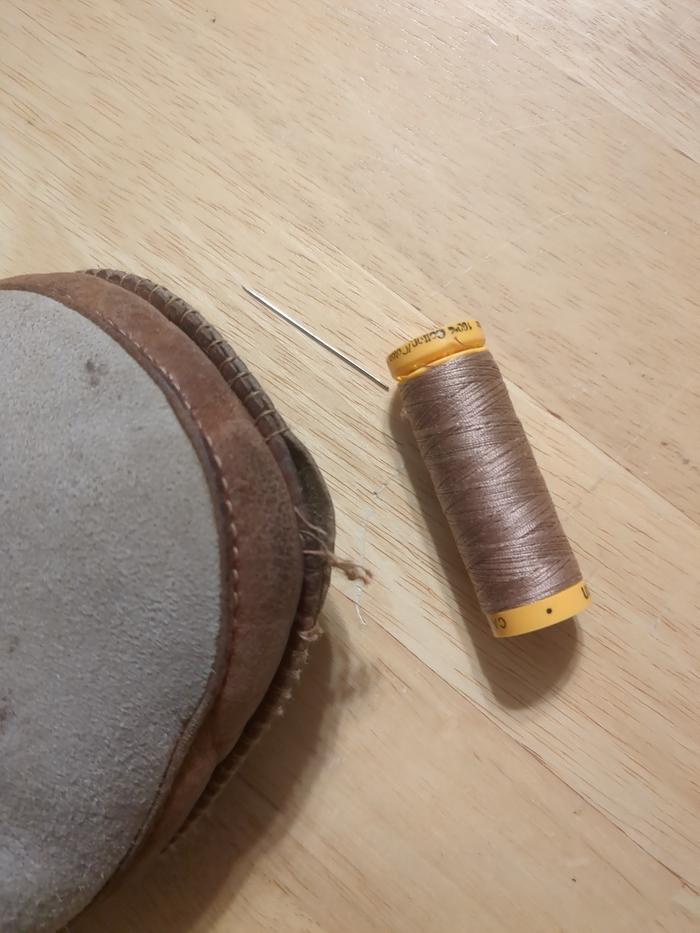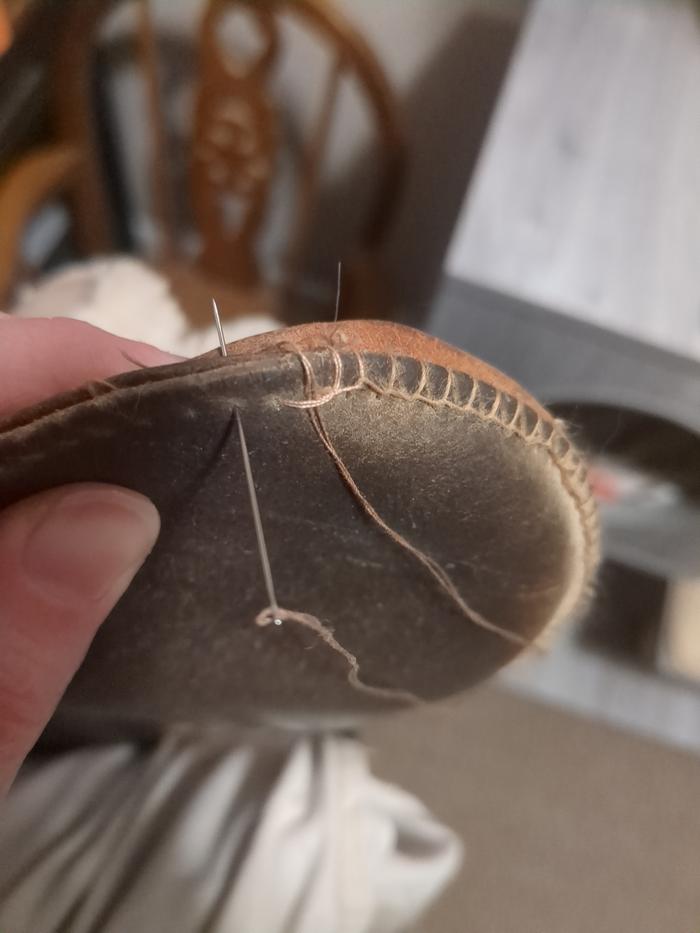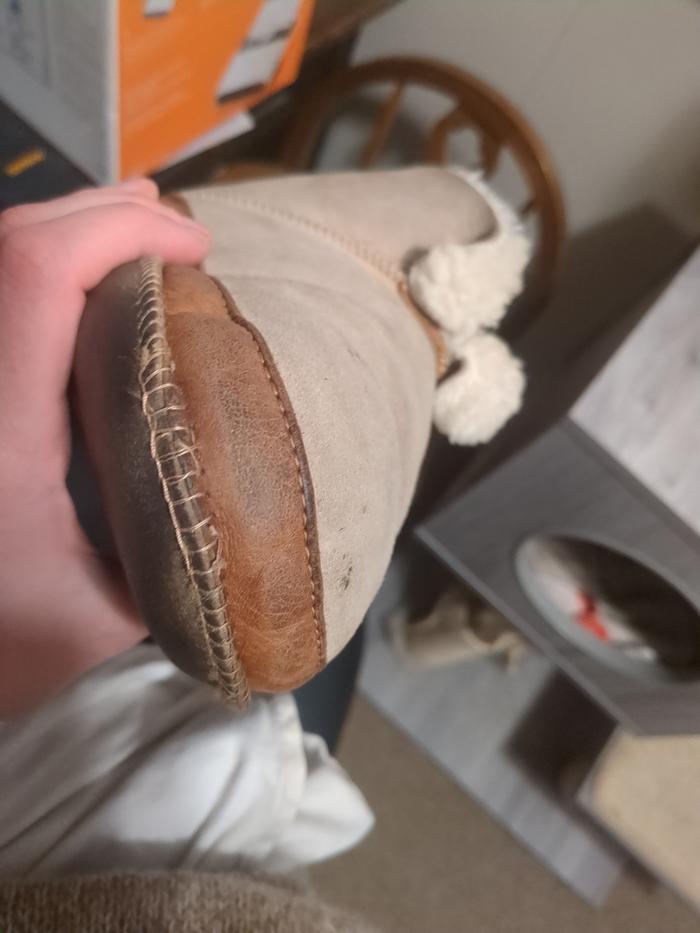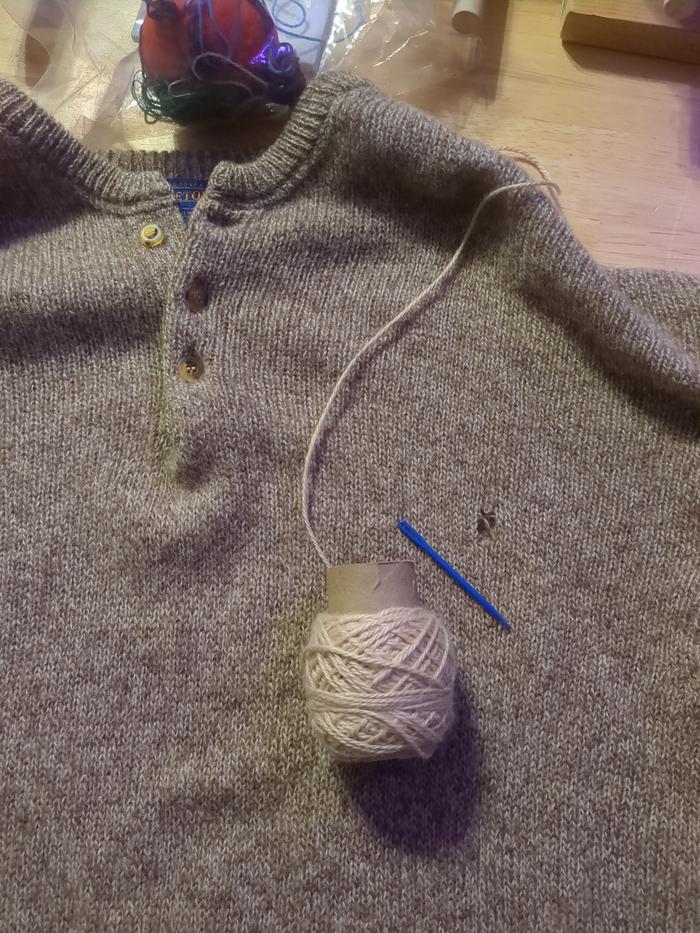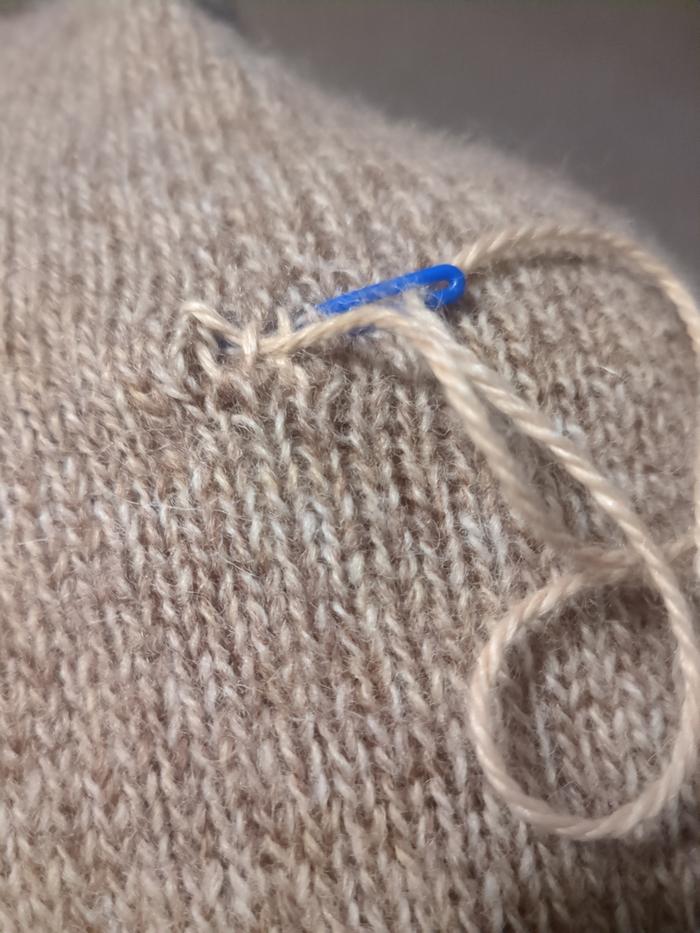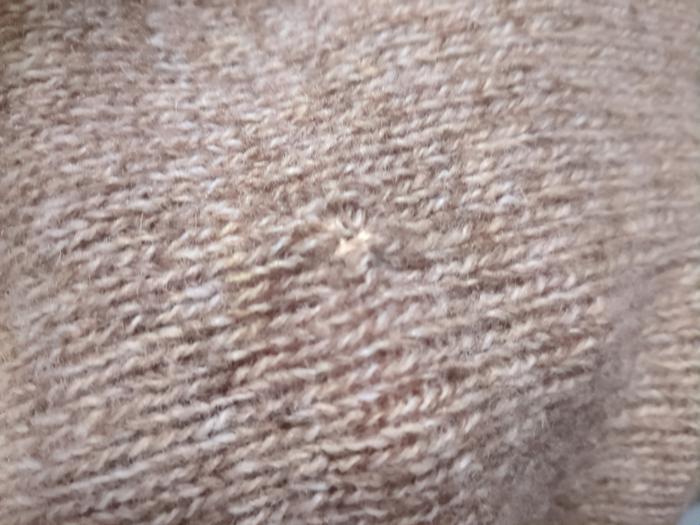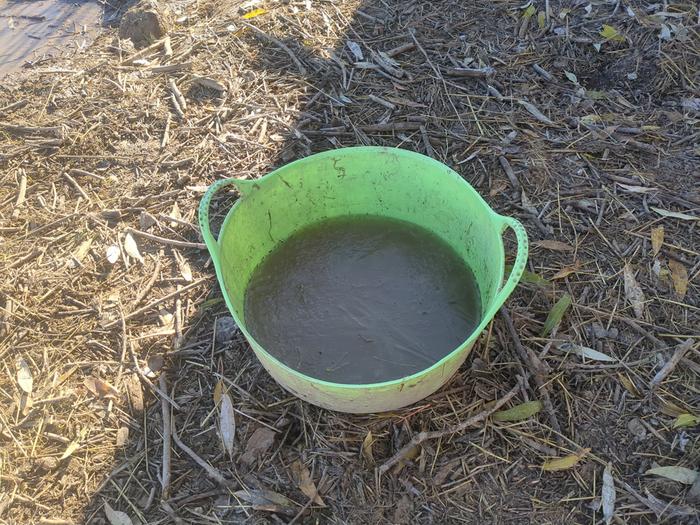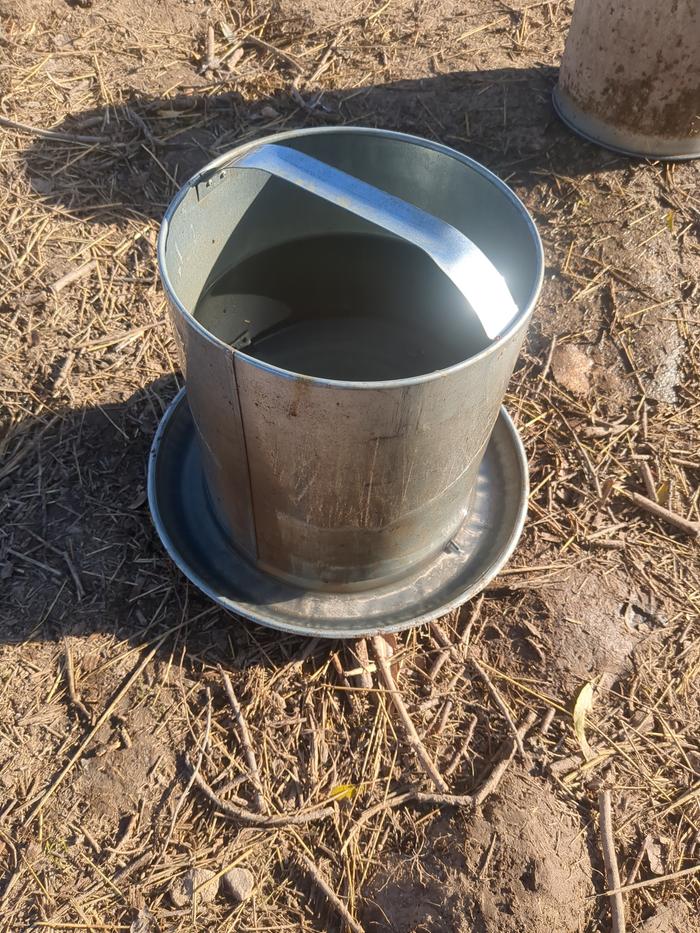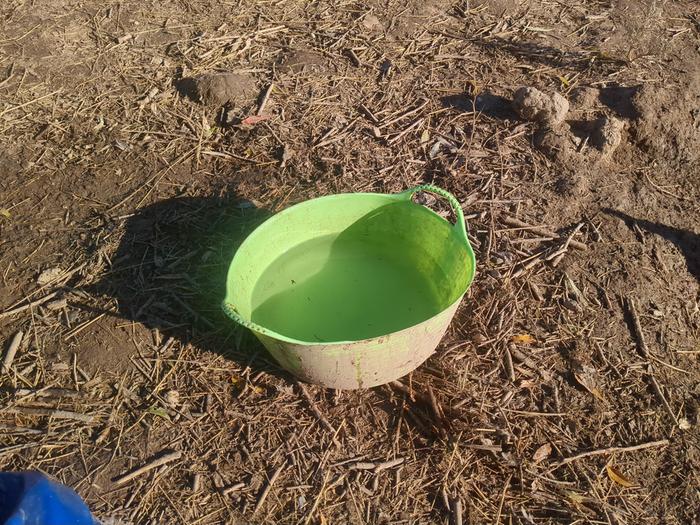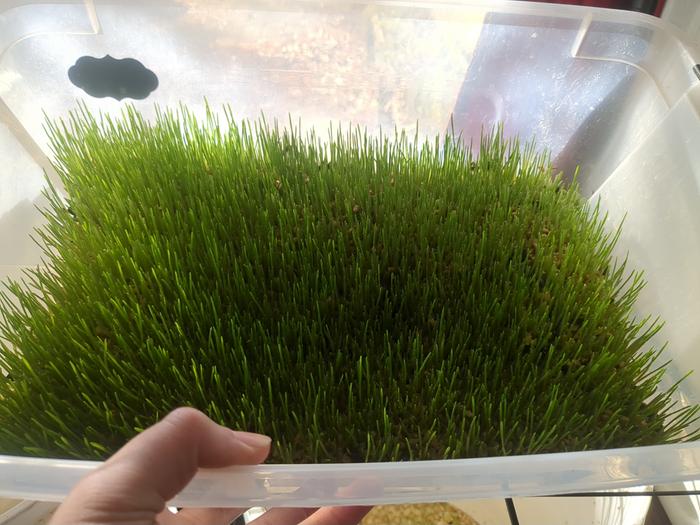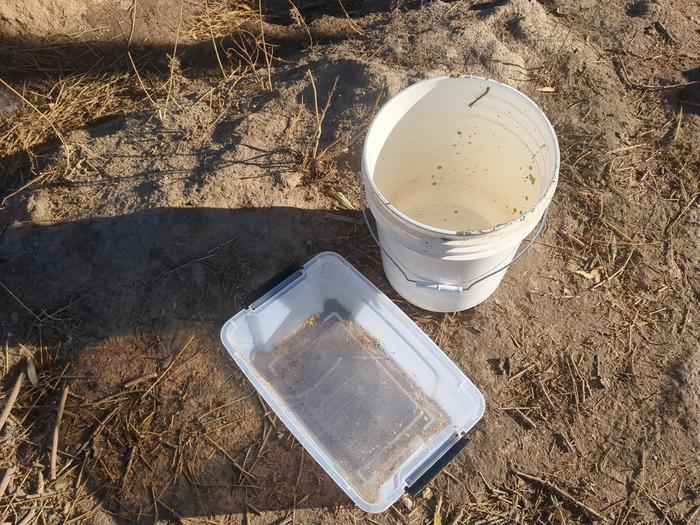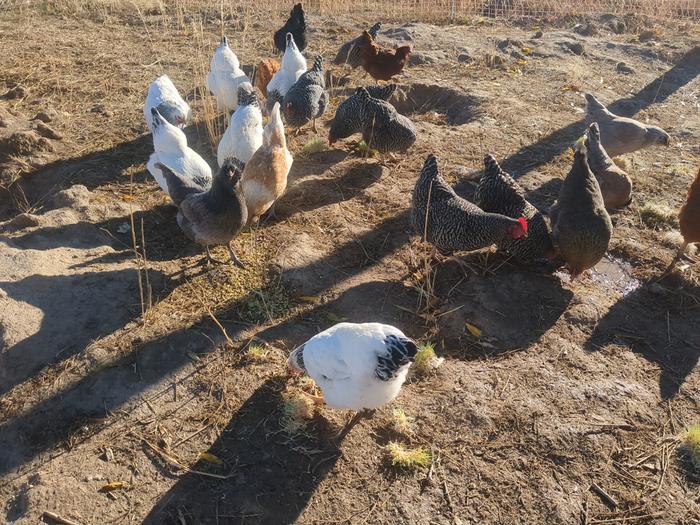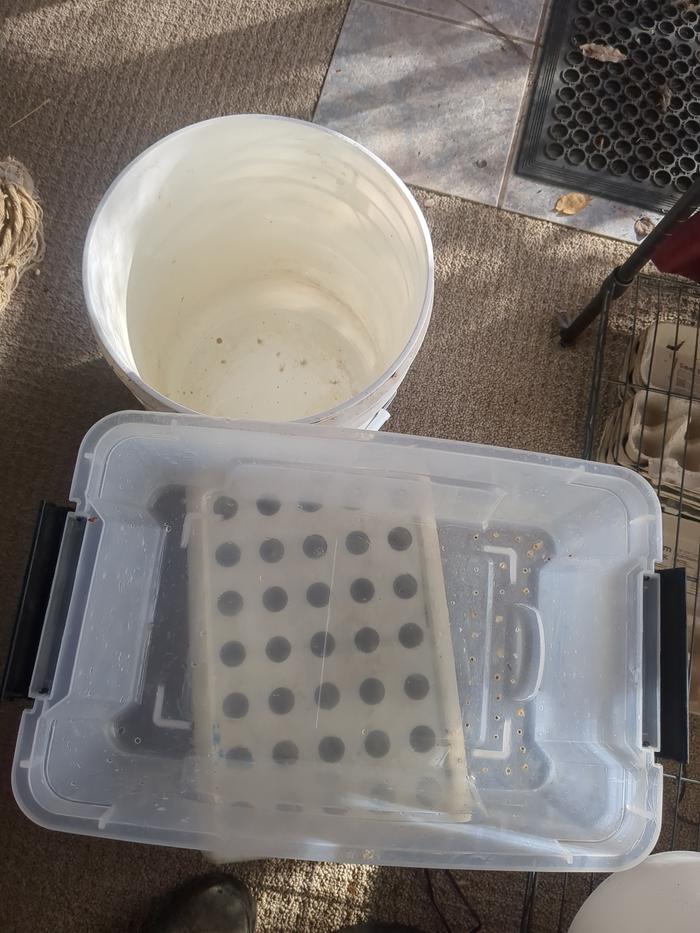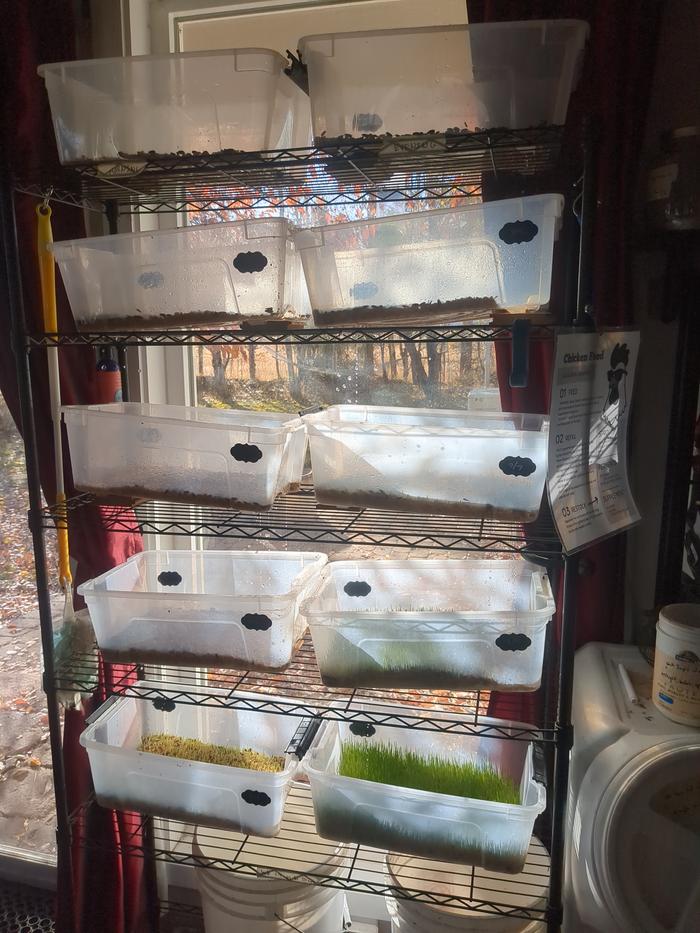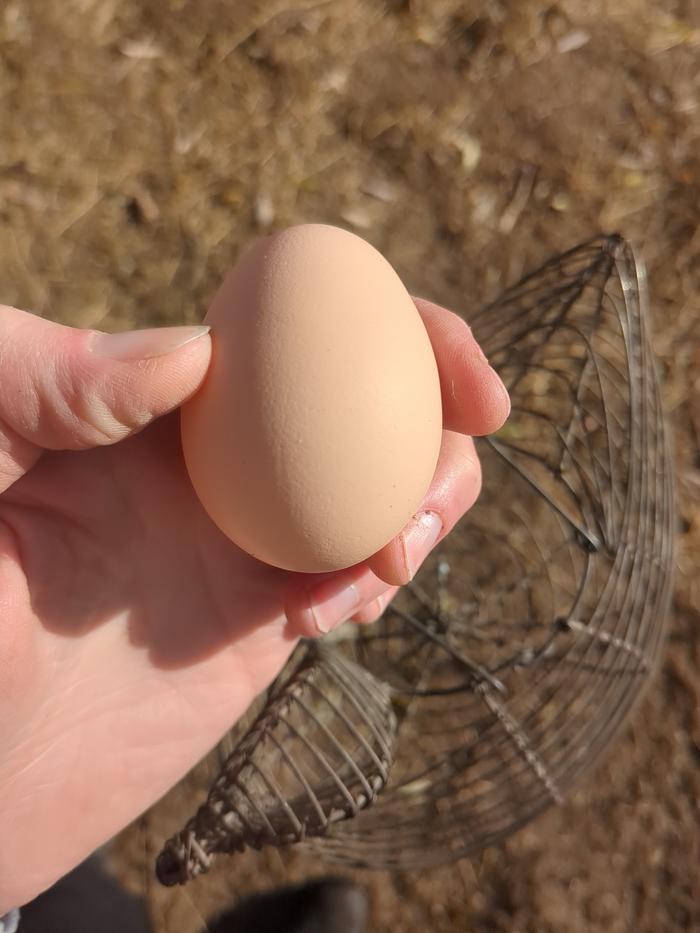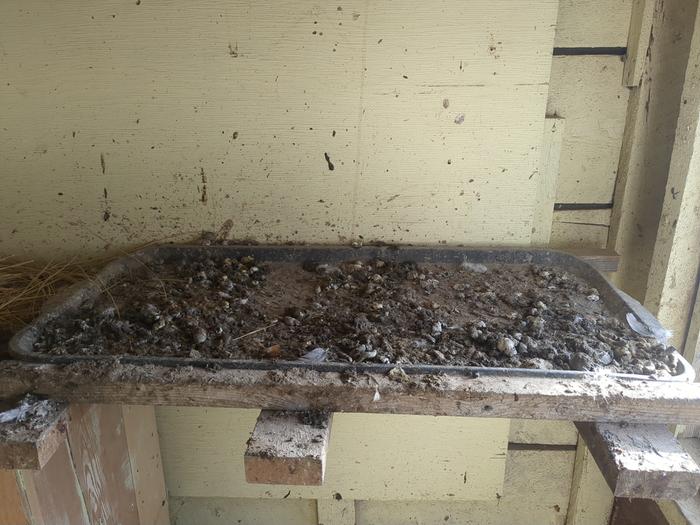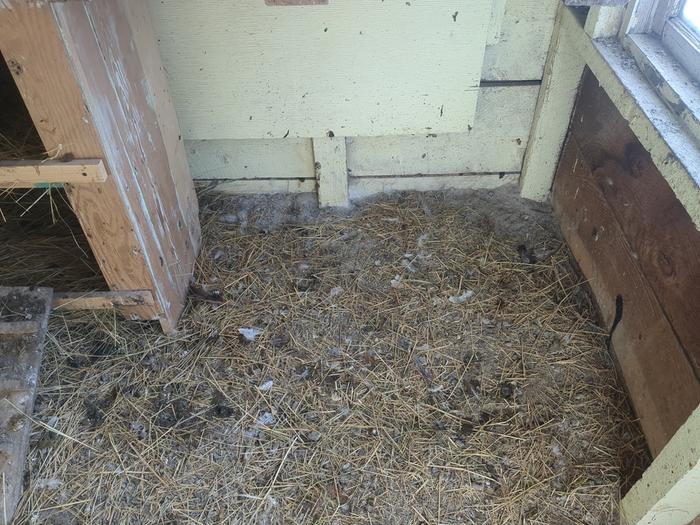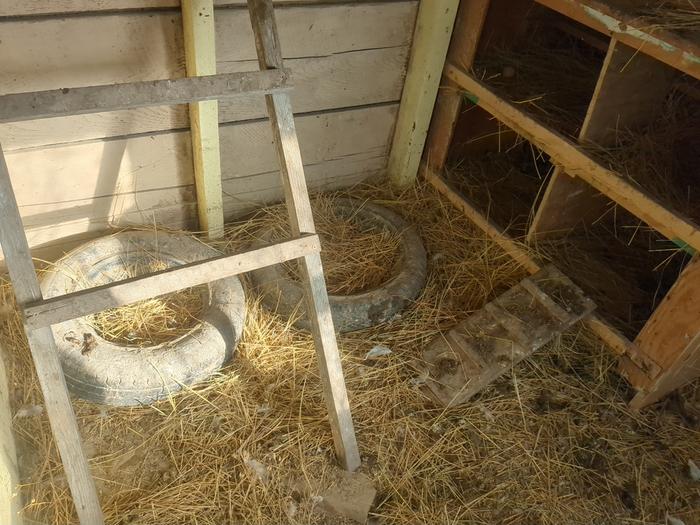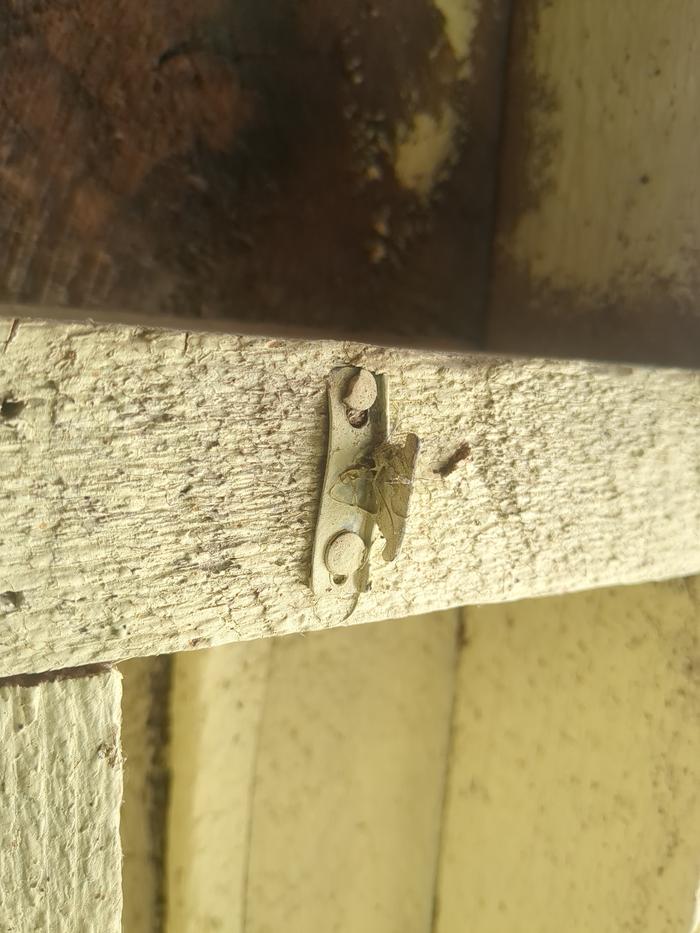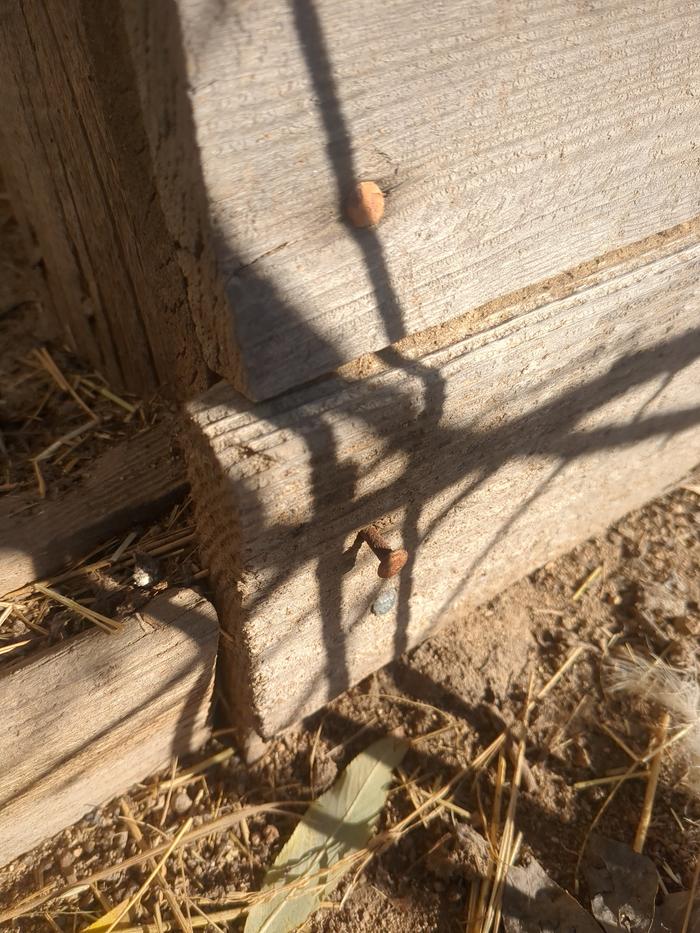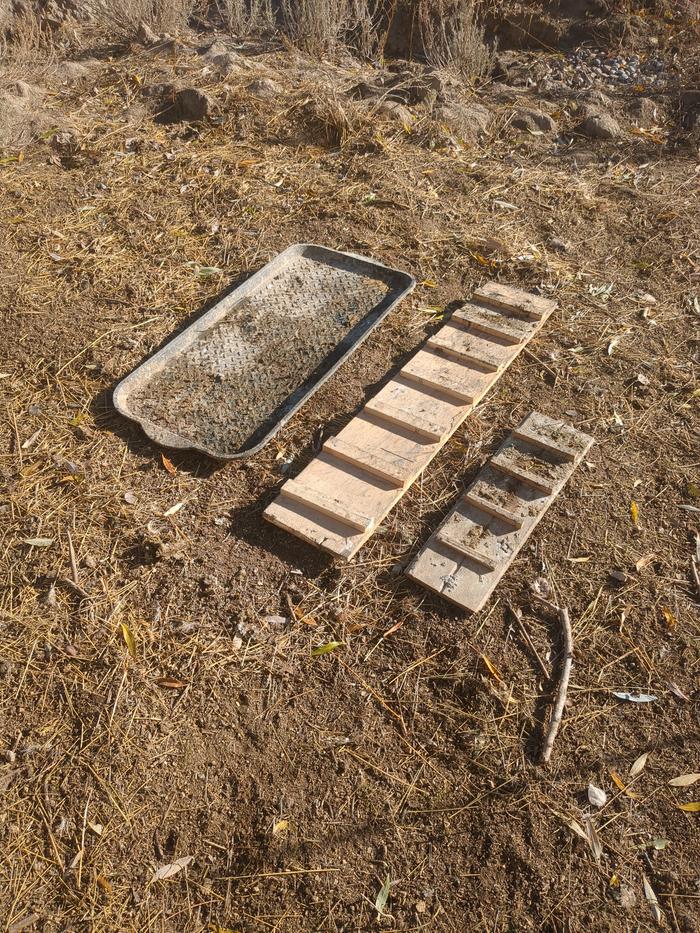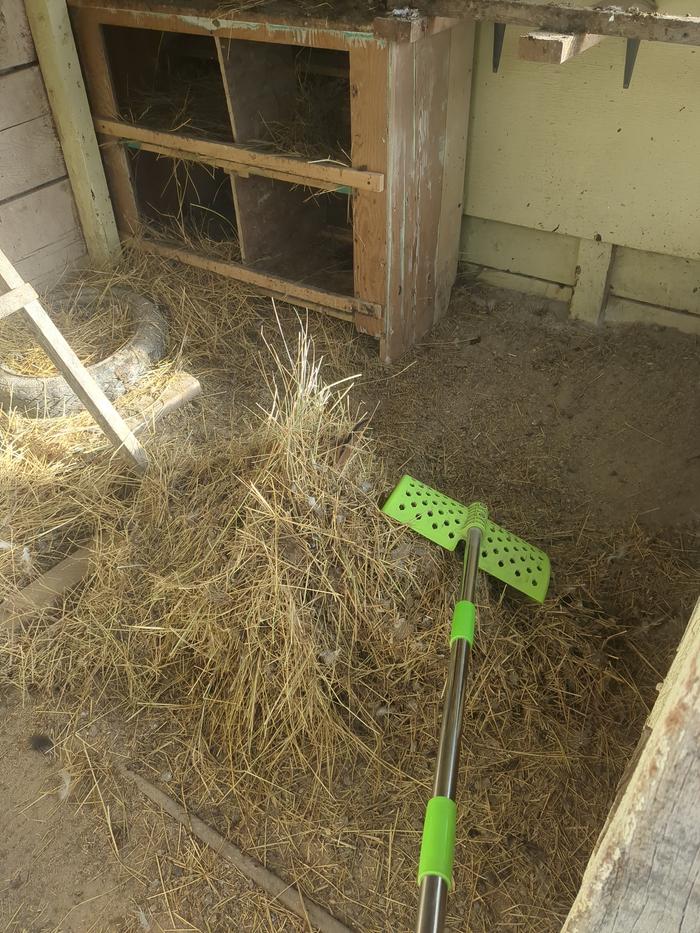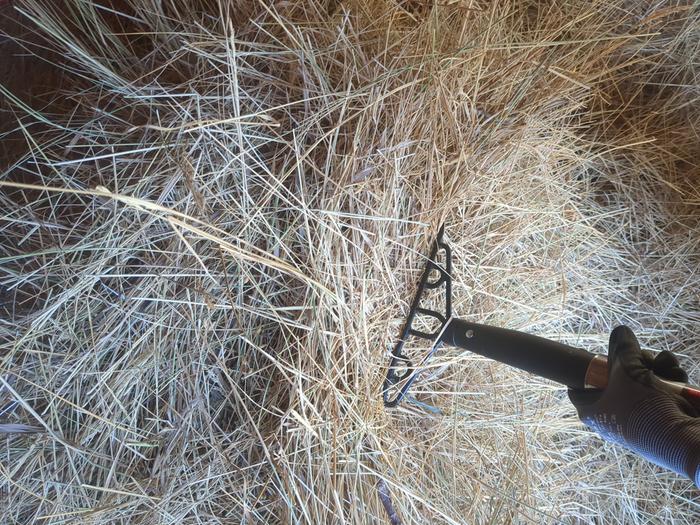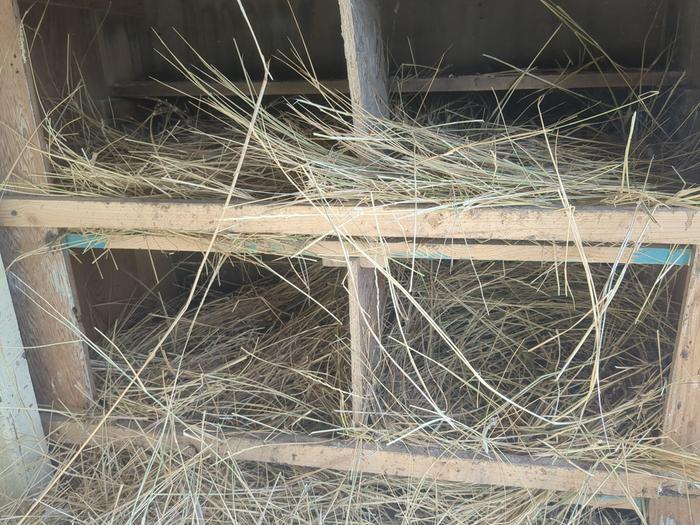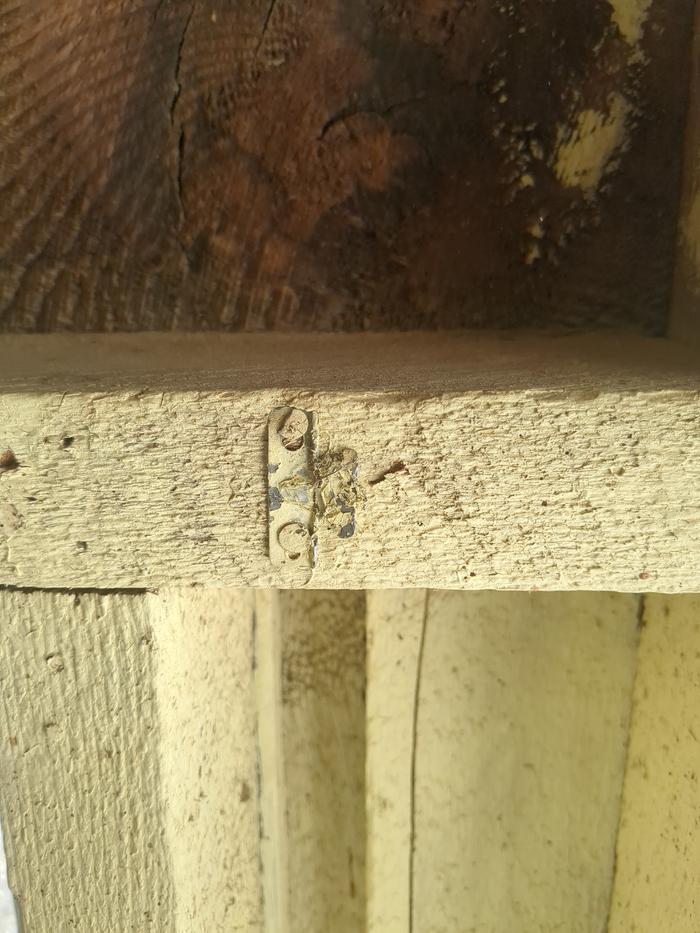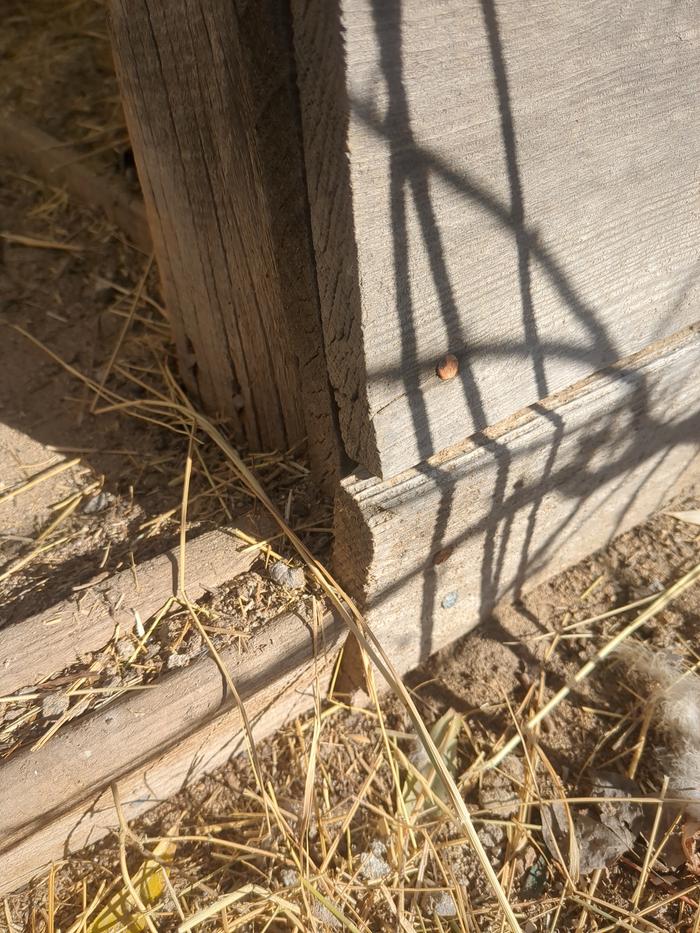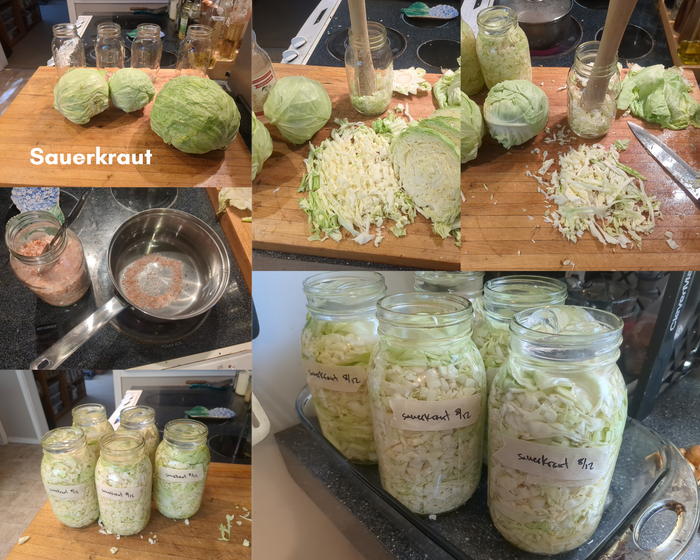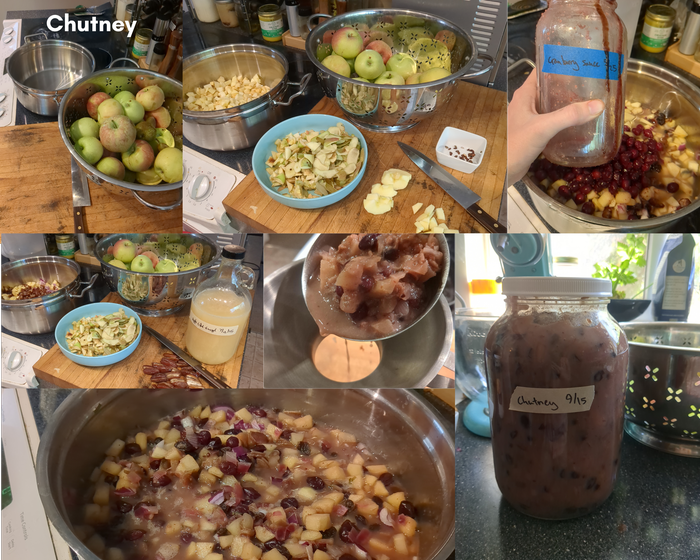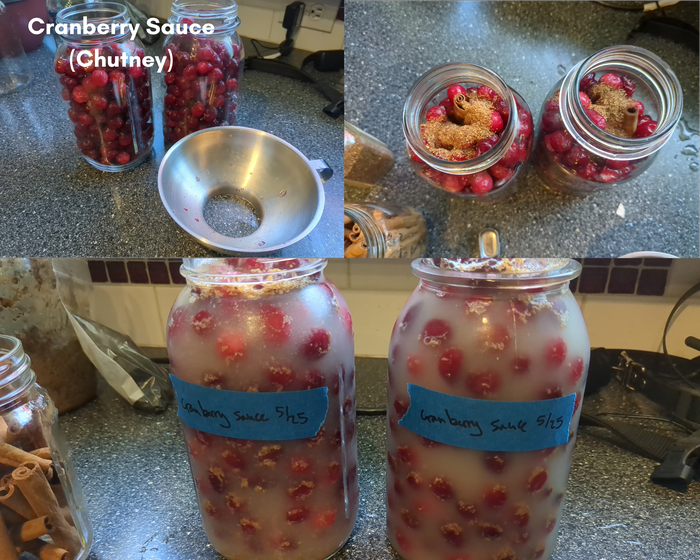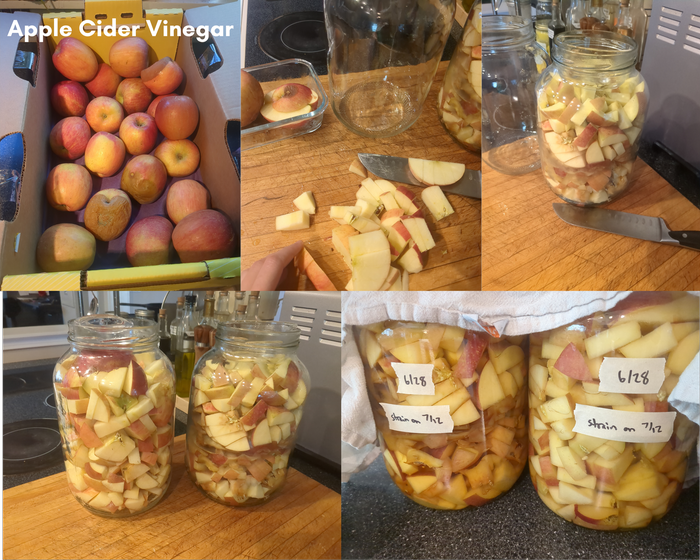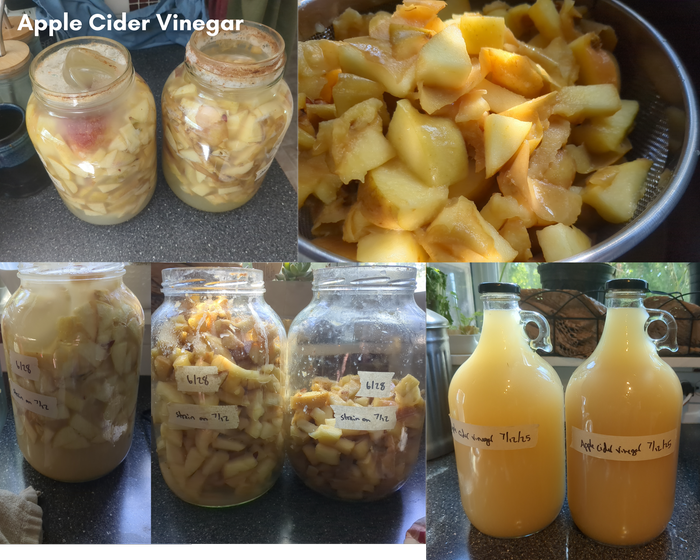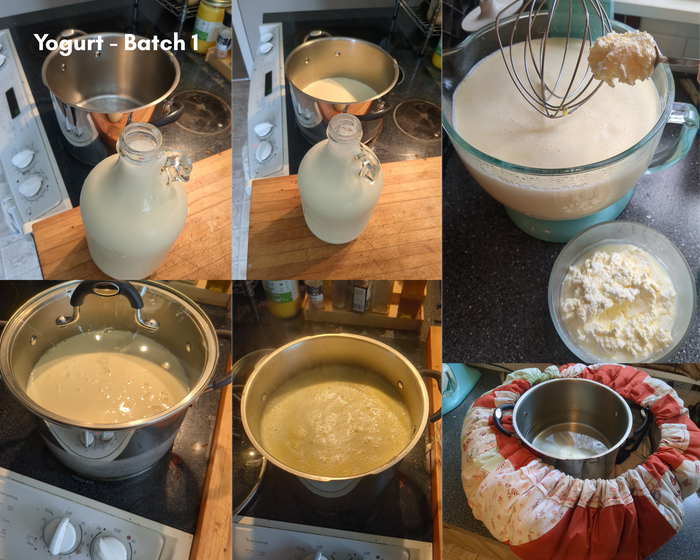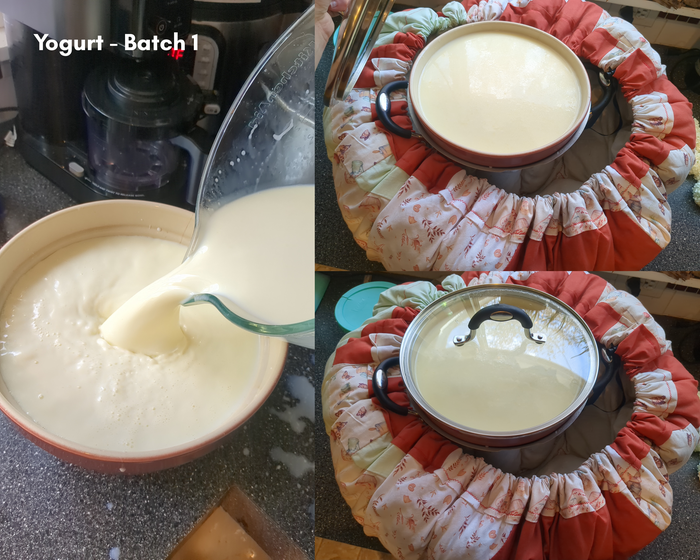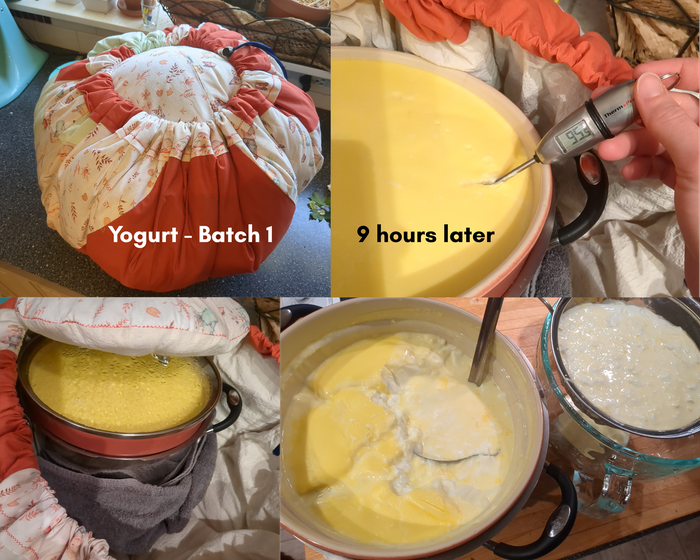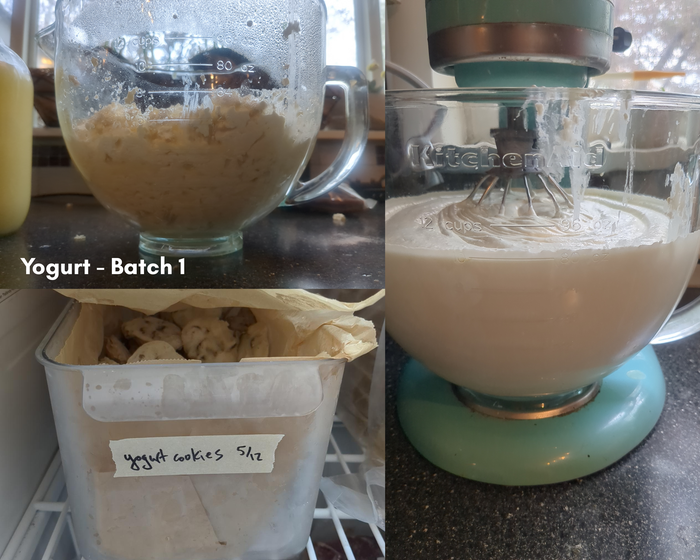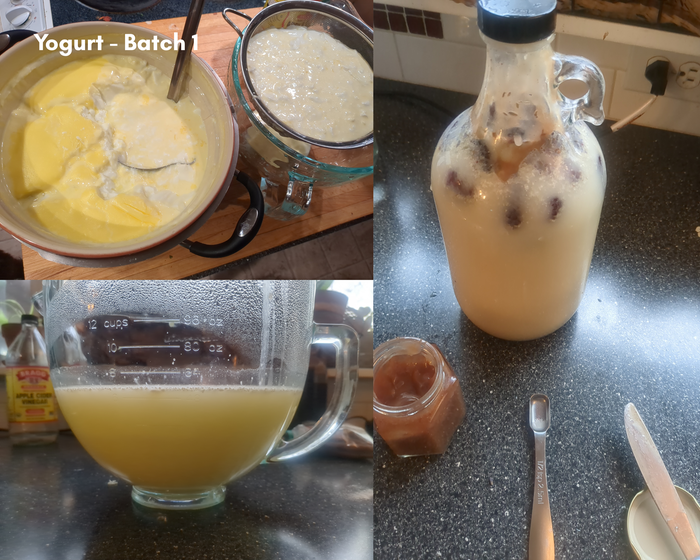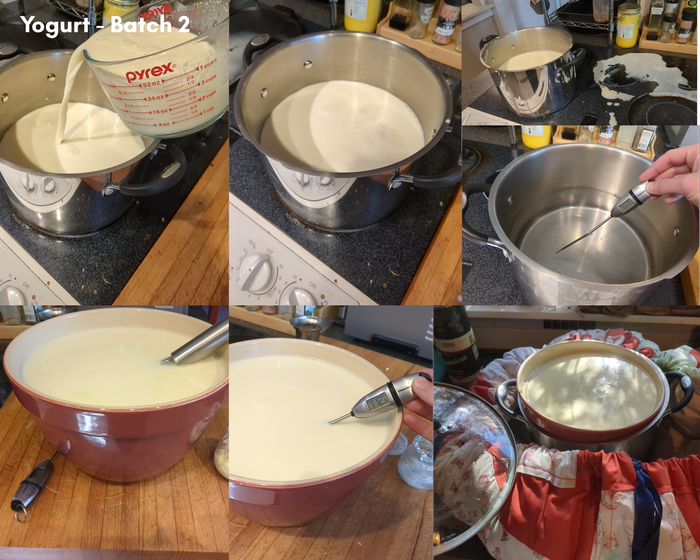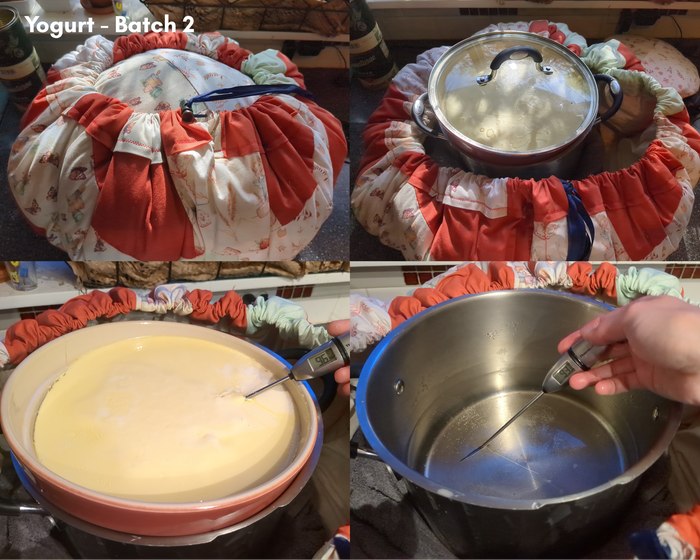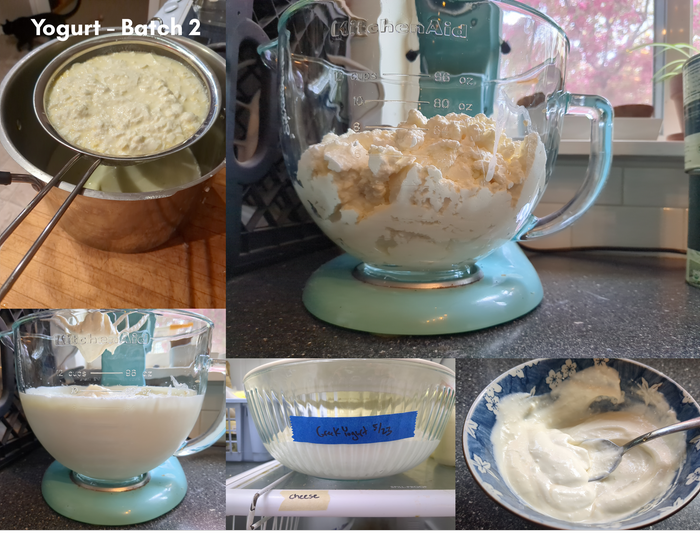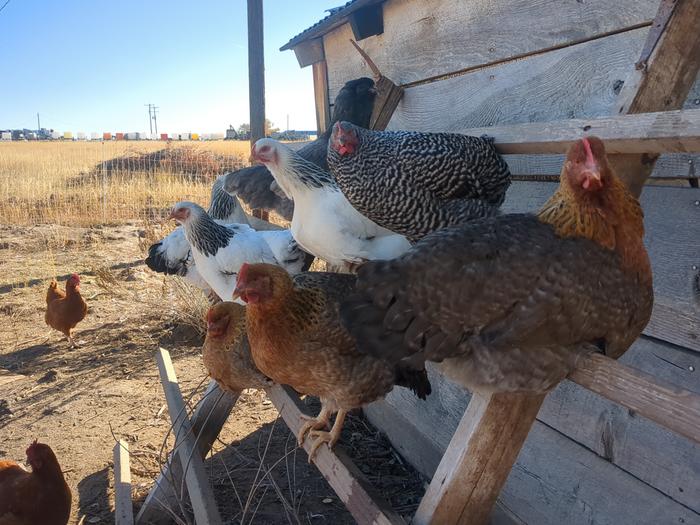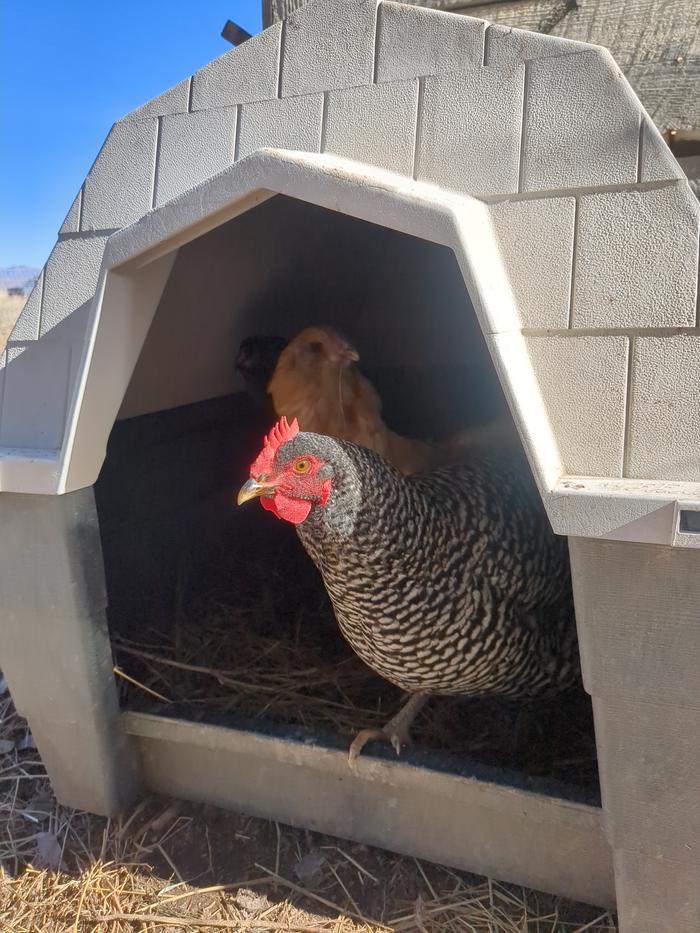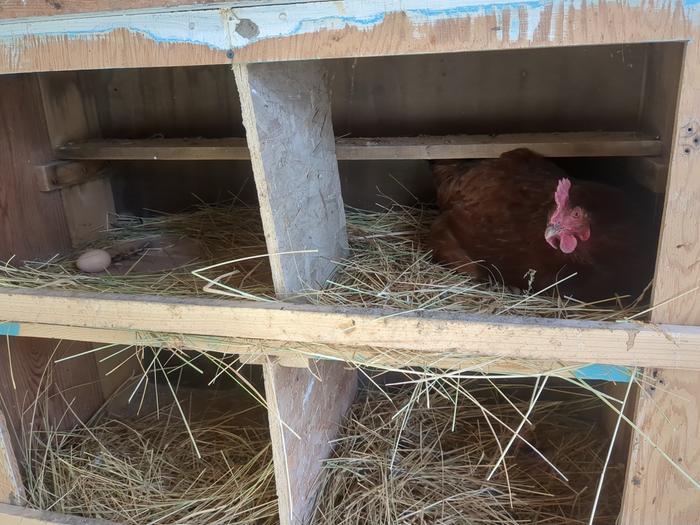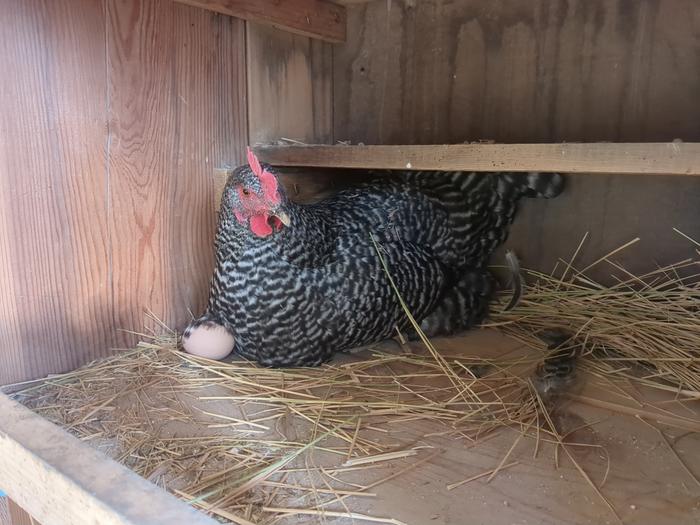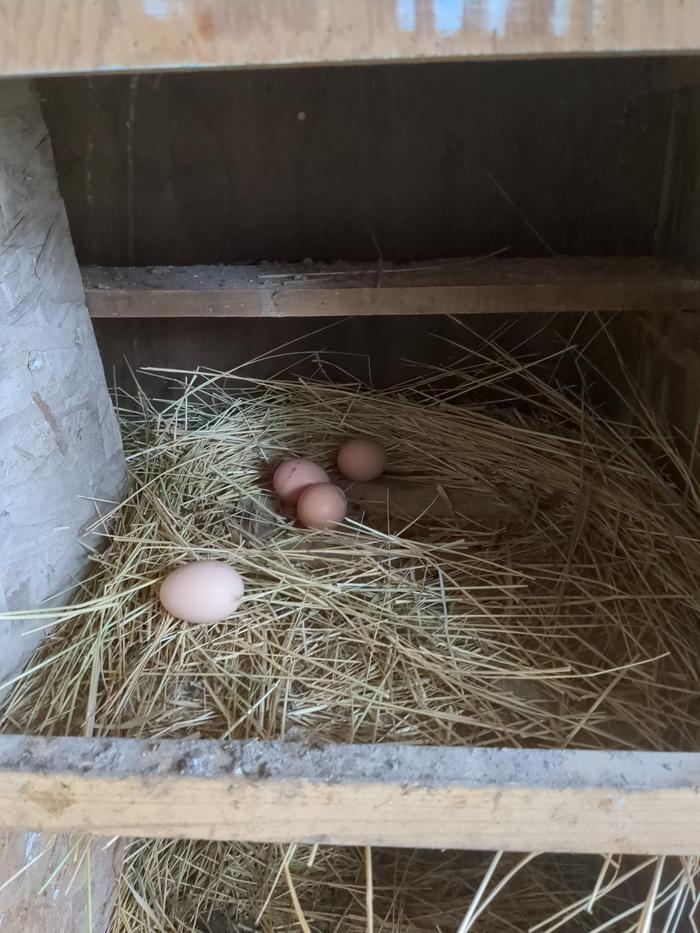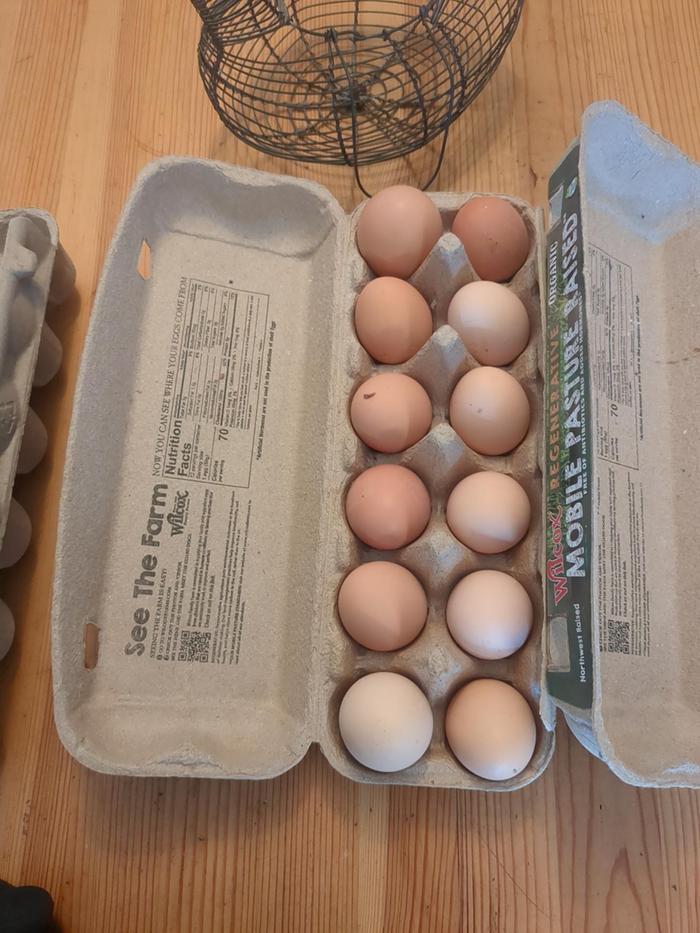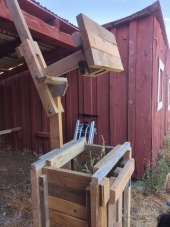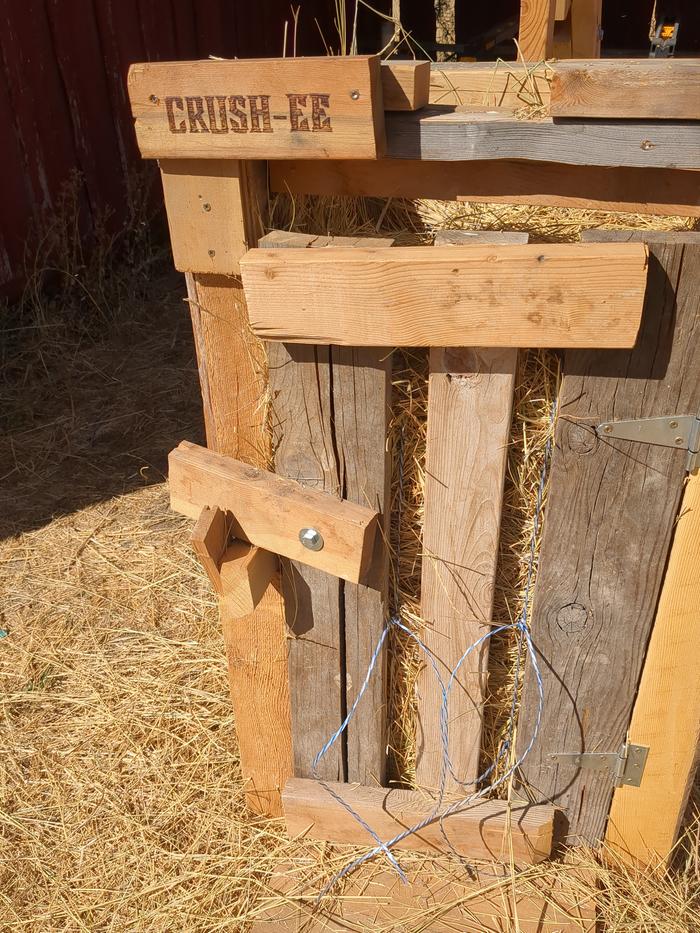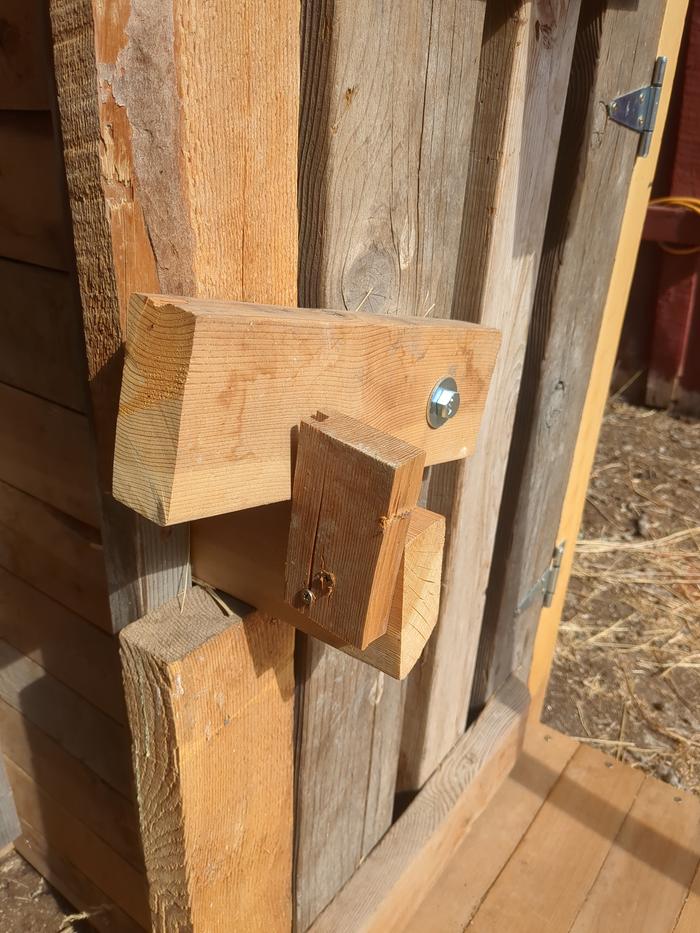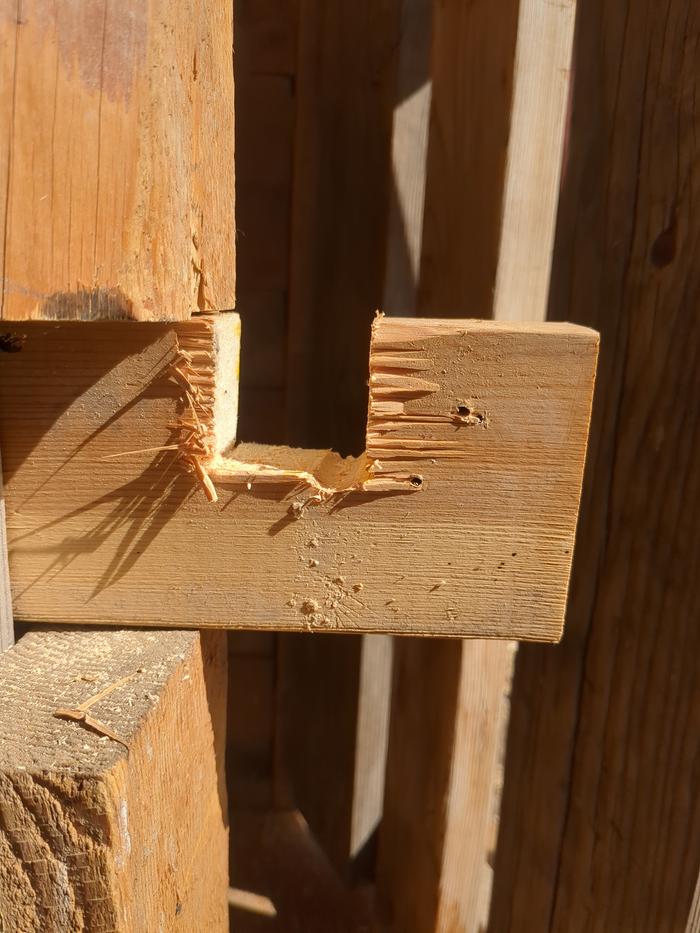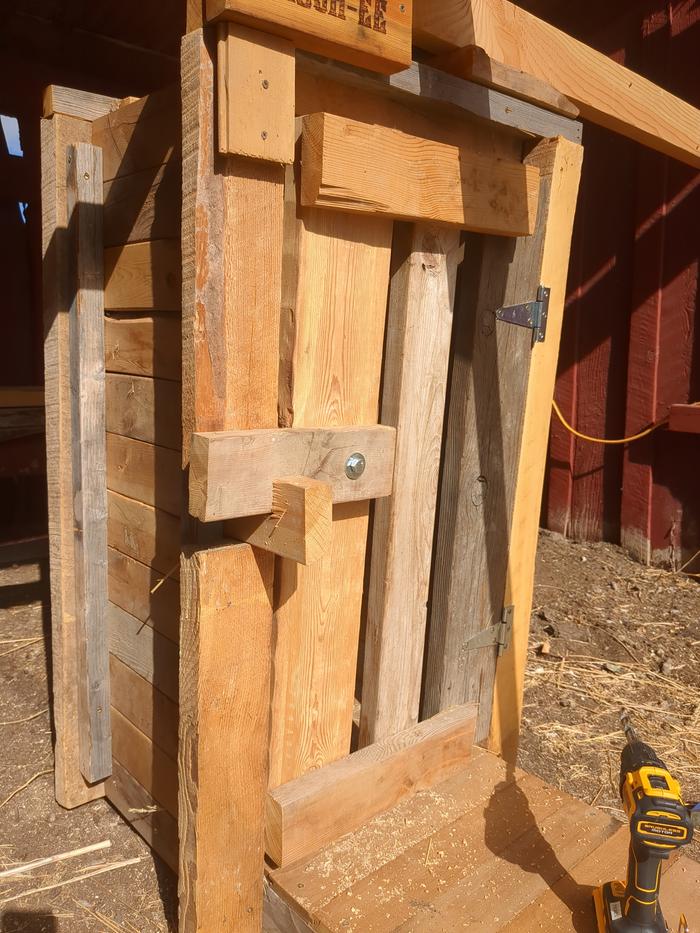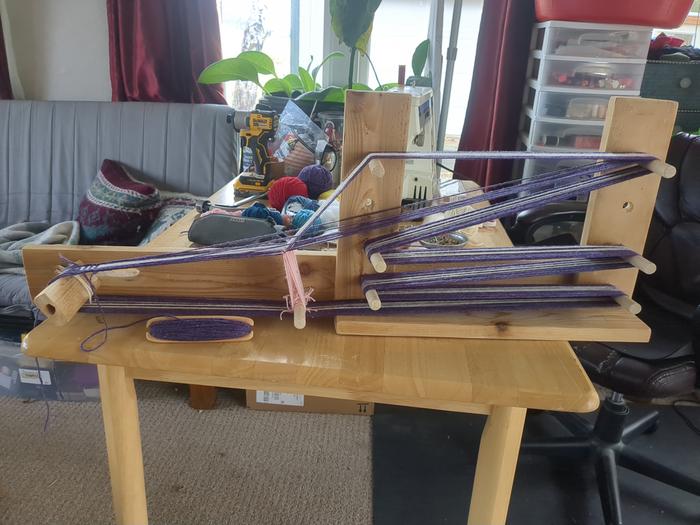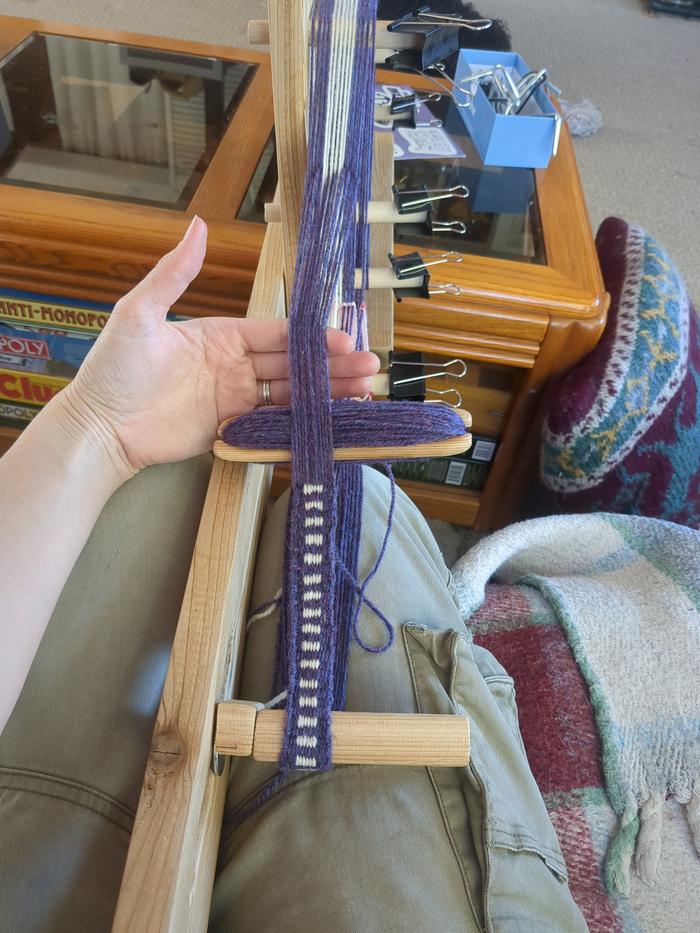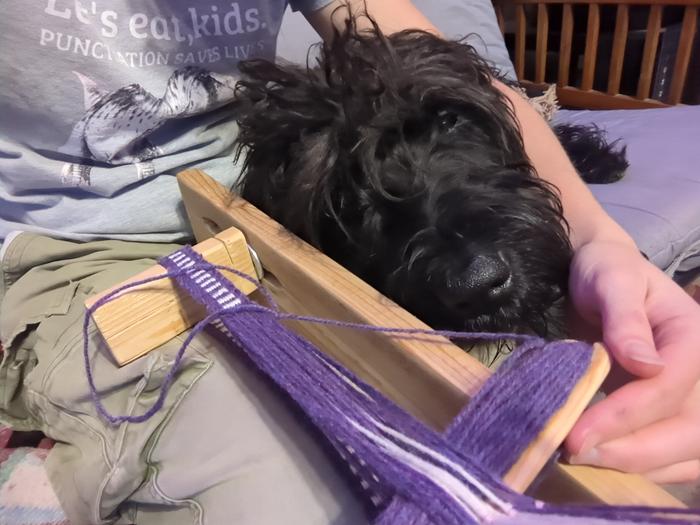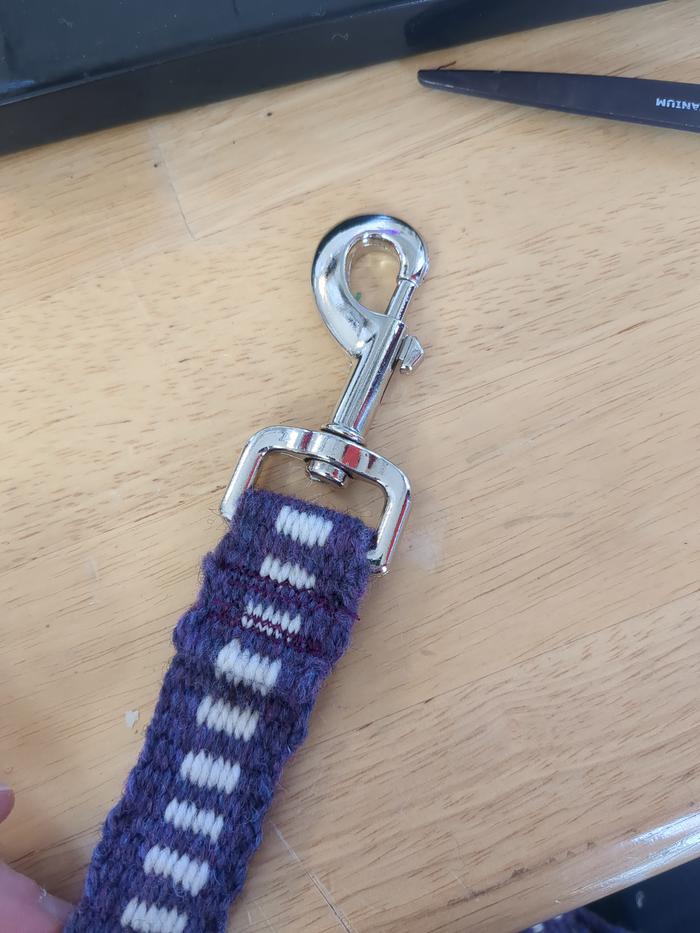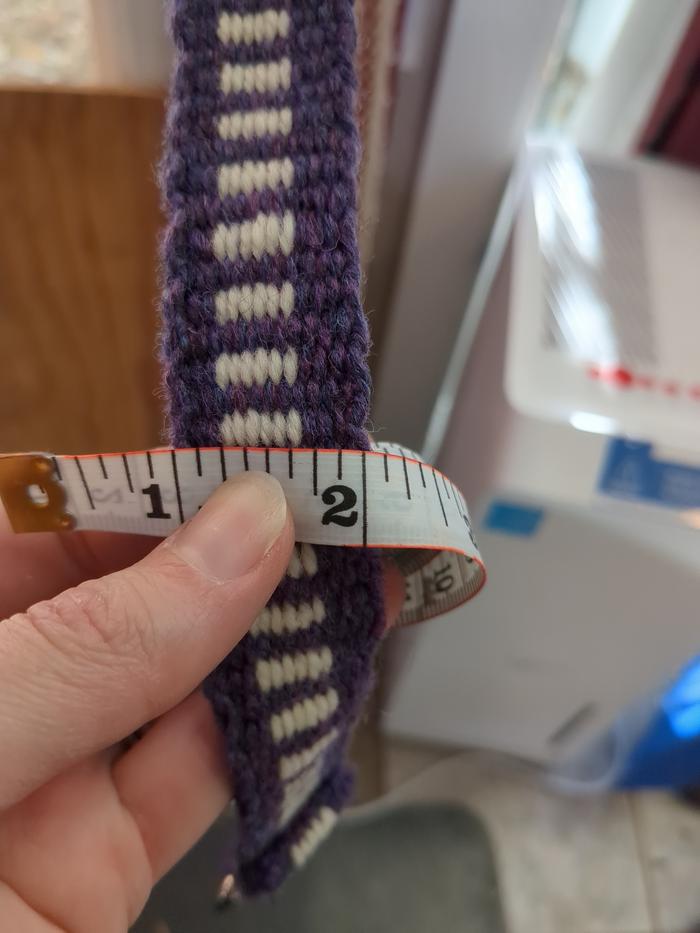To complete this BB, the minimum requirements are:
- build a loom capable of weaving a warp-faced fabric at least 2" wide
- weave a small sample of warp-faced cloth to show the loom works
To show you've completed this Badge Bit, provide proof of the following as pics or video (less than two minutes):
- your materials used to make the loom
- the process of making the loom
- the finished loom making warp-faced cloth
After doing a bit of research, I made an inkle loom! I roughly followed
this tutorial but changed a couple things because I didn't want to use glue. I struggled with the tension peg because I didn't have any ideal materials around for that and I still didn't really understand how it worked until I started weaving but I eventually made it work. The pegs stick out about 4.5 inches, so it is definitely capable of making fabric at least 2 inches wide even though I didn't make anything that wide to begin with. I loaded it up with string and had no sense of how big it was going to be and it ended up way smaller than I thought it was going to be. The moment I started weaving and discovered that I can move one half of the strings up and down to go between the strings that are being held down by the "heddles," my brain exploded. Like it finally made sense what was happening. I could not conceive of what was going on until I got to that point. Once I started I obsessively finished the strap to see how long it was going to be and I got about 4 feet in less than an hour (I didn't do any fancy patterns), which was super super fast. I always thought weaving was going to be extremely slow.
I found this 1x4. I think it's 8 ft long.

I cut it into pieces following the tutorial I found. After I started putting it together I decided to make the upright pieces longer so I could overlap pieces and screw them together instead of gluing them.

Here are the pieces laid out with the smaller uprights based on the tutorial.

Here I swapped the smaller pieces out with slightly longer ones so I didn't have to use glue. I ended up with one 3' piece, one 1.5' piece, and two 1' pieces.

Sanded the boards a bit.

Screwed together.

Drilled holes. I didn't measure these placements at all (didn't seem super important to get these exact). I struggled with the slit and wish I had made it smaller in hindsight.

I got a 5/8" dowel and cut it into a bunch of 5 inch pegs. I later realized that I didn't have a big enough drill bit to make holes that these would fit through so I had to whittle them a bit and hammer them in (which also meant no glue but at the same time the holes weren't super straight so it's a little cattywompus (is that a word?)). I sanded these by hand.

Here is the loom!

Had a bit of trial and error with the tension peg. Will eventually replace with some purchased materials to make it nicer but it works for now.

Making the shuttle. At first I tried making it out of round wood but I kept splitting it when I tried to drill the holes. I eventually found some lumber that looked like a good size and used that. I drilled 1/2 inch holes through it and then cut it right outside the holes and then whittled it into shape and sanded the heck out of it until it was how I wanted it. If you try and drill the holes on the end of a stick you will not get the hole exactly where you want it. This thing is pretty cool and I'm glad I took the time to really sand it down.



The tutorial said to make "heddles" and I was so confused until I got to the point of threading the whole thing.
This weaving tutorial was invaluable.

All set up and weaving.


I got four feet out of this. It got tighter as I went, which I was not expecting. Also the extra big part of the slit for the tension knob that I thought was a messup is actually perfect for holding the shuttle.




